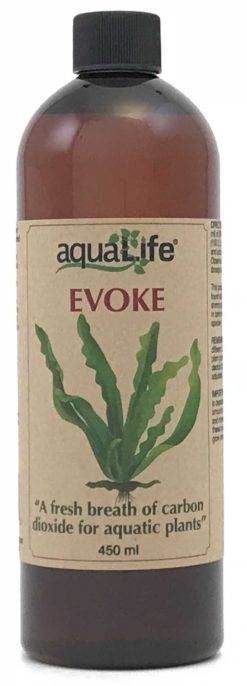I have been keeping aquariums over 50 years, and seldom have I encountered a product that pleases me as much as the OASE BioMaster filter I installed a little over a month ago. My aquarium is an 18 x 18 x 24 tank that holds about 21 net gallons. It is heavily planted, with carbon dioxide injection during the daylight hours. The aquarium hosts seven fish, four scissortail rasboras and three harlequin rasboras.
The first thing that struck me as I unpacked and assembled the filter was the foolproof design. All parts that matter have been designed so that they cannot be accidentally assembled incorrectly.
The key features that appeal to me are as follows:
- Filter parts mounted inside the aquarium are either black or transparent plastic, making them easy to hide so as not to distract from the aquascape.
- The filter accommodates the aquarium heater, thus protecting it from physical damage and encrusting algal growth, while ensuring evenly heated water throughout the system. My “Thermo 250” was supplied with a 150-watt OASE HeatUp heater. Should I want to run the unit without the heater, for example on a tank of goldfish, a plug is supplied for sealing the heater opening in the top of the filter.
- The large pre-filter can be removed for separate cleaning, without disassembling the entire filter.
- The pre-filter also doubles as a pump primer for the filter. Hurray! No more clumsy siphon starters or sucking on the hoses to start water flowing.
- Intake and outlet hoses connect to a manifold that locks in place by means of a lever. Unlocking the manifold simultaneously closes the hose barbs, enabling the hoses to be disconnected from the base unit while remaining filled with water.
- The hose manifold cannot be removed without first removing the pre-filter, thanks to an interlock mechanism. This means the filter must first be disconnected from the power supply before any service is performed, thus making electrical hazards less likely.
- The unit comes complete with three tiers of coarse, medium and fine sponge filters and a biofiltration compartment stocked with plastic pieces to encourage nitrifying bacteria. One of the sponges could be removed and substituted with a bag of activated carbon or other chemical media, if one so desired.
- The filter housing, when fully assembled with media in place, holds about three gallons of water, increasing the system capacity.
I ran the unit on my tank for 30 days without doing any water changes or other maintenance, apart from topping up for evaporation. During that time, the water remained crystal clear, despite regular feedings with flake food and frozen brine shrimp. Patches of blue green algae (cyanobacteria) that had been tenaciously growing on the substrate disappeared, never to return. I also observed that the fish seemed to appreciate the currents produced by the 250 gallons per hour flow rate. (Previously, I was circulating water with a powerhead at a much lower flow rate.)
At the 30-day mark, I did a partial water change and cleaned all the filter elements. Disconnecting the power to both the heater and the pump, I removed the pre-filter unit to a bucket, and then disconnected the hose manifold from the housing. Carrying the housing to a nearby sink, I removed the heater and disassembled all the filtration components. I kept the biofiltration components in a small amount of tank water to preserve the bacteria, while rinsing the other filter elements free of trapped debris under the tap. I replaced everything, re-connected the hose manifold, and had the unit ready to run again after only 15 minutes of work, and with nary a spill on the floor. Because the hoses were already full of water, the siphon started as soon as I reconnected the manifold, lowering the water level in the tank. In the usual manner, with a long siphon hose, I then proceeded to remove water down to about half the total tank volume, followed by topping up with dechlorinated tap water. It was among the easiest aquarium maintenance routines I have experienced.
Another cool feature of this unit: parts are supplied to permit either a single-point outlet or a multipoint “water curtain” outlet that can be mounted across the back of the tank. The latter arrangement might be preferred with fish that seek calmer waters, such as discus.
If I were to be pressed to name a single drawback of this filtration system, I would reluctantly admit that it might be too bulky for some applications. But it fits easily underneath my 18 x 24-inch stand with room to spare.
One final note: the unit is whisper quiet. After I initially installed it, I kept checking to make sure it was running.
OASE makes the BioMaster in sizes suitable for aquariums up to 160 gallons. If you are serious about planted freshwater aquariums, this is the best filtration system on the market. Saltwater enthusiasts looking for a canister filter for their system should also give the BioMaster a try.
You won’t be disappointed.
by John Tullock, January 16, 2020








